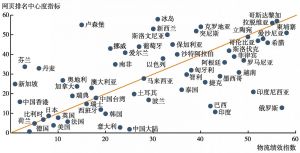章节
累积贸易成本及其对国内和国际价值链的影响
关键词
作者
[美]杜大伟(David Dollar) David Dollar(杜大伟),布鲁金斯学会约翰·桑顿中国中心高级研究员。
[巴]若泽·吉勒尔梅·莱斯(José Guilherme Reis)
王直 ,对外经济贸易大学全球价值链研究院教授、博士生导师,海外院长,美国乔治梅森大学政策、政府和国际事务学院资深研究员。1985年1月,获中国农业科学院硕士学位;1990年6月,获俄亥俄州立大学硕士学位;1994年11月,获明尼苏达大学博士学位。1985年1月-1987年7月,任中国农业科学院农业经济研究所研究员。1994年7月-1995年8月,任世界银行世界发展报告顾问。1995年9月-1997年9月,任明尼苏达大学应用经济学系副研究员。1997年10月-1999年7月,任普渡大学全球贸易分析研究中心经济学家。1999年7月-2002年7月,任美国农业部经济研究局经济学家。2002年7月-2004年3月,任乔治梅森大学计算科学学院高级研究员。2004年5月-2005年8月,任美国商务部经济分析局经济学家。2005年8月-2011年7月,任美国国际贸易委员会研究部高级国际经济学家。2011年7月-2016年3月,任美国国际贸易委员会研究部资深国际经济学家。2016年4月,任对外经济贸易大学全球价值链研究院海外院长。
检索正文关键字
章节目录
-
一 关税、贸易成本叠加以及竞争力
- (一)全球价值链下贸易成本的放大与累积
- (二)交易成本和国内增加值
- 1.扩展的有效保护率和增加值的相对价格
- 2.对竞争力和出口导向型增长战略的影响
- 3.行业与国家的贸易成本
- (三)加拿大和中国案例的应用与扩展
-
二 世界贸易网络中的贸易成本叠加
- (一)贸易成本沿国际供应链的累积
- (二)叠加成本和贸易便利化:国际贸易网络视角
- 三 总结
- 附录4.1 扩展有效保护率及增加值的相对价格
- 附录4.2 测量国际价值链长度以及跨境次数
相关文献
查看更多>>>










